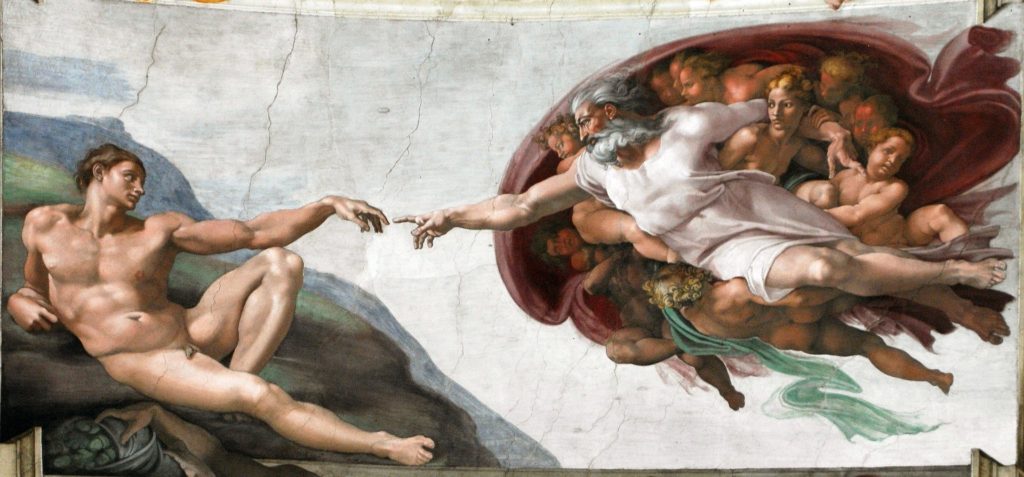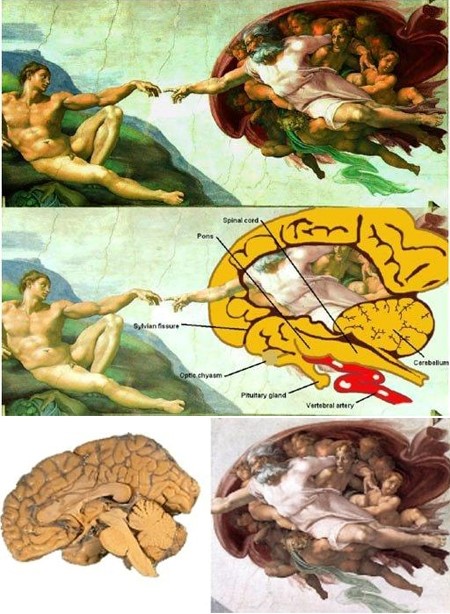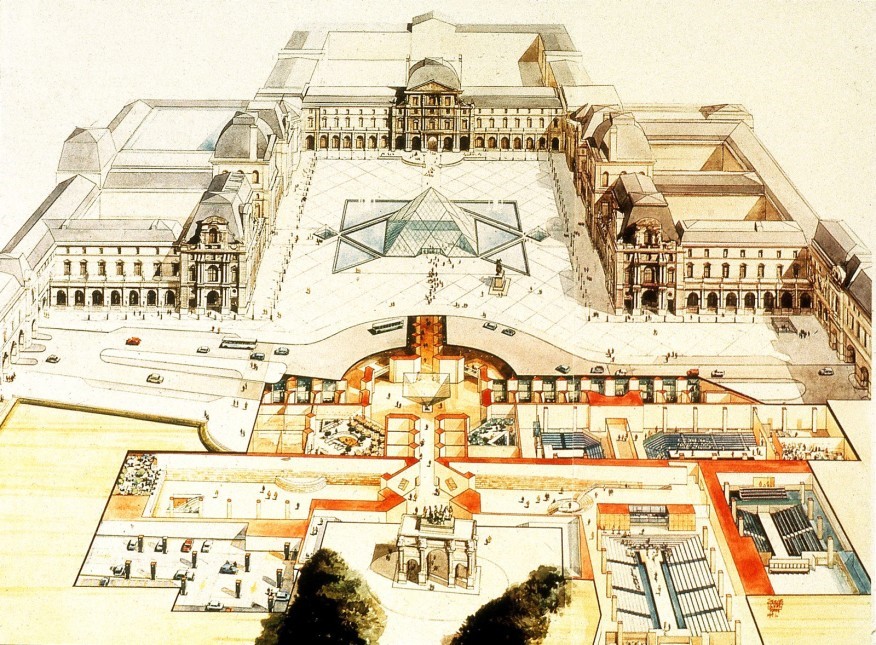
By William Van Zyl (Published in May 2021) – A Short Story.
Listen to the podcast: https://www.podbean.com/ew/pb-5rmt9-10fa7ae
The frames were laying on the floor like skeletons ripped of their flesh – vicious vultures had attacked. When the next shift of security guards arrived, they only found the remains.
The two night-shift guards were handcuffed to a shelf in a small office at the famous building. They looked like aliens – duct tape covered their eyes and mouths. They didn’t see a thing. The dayshift guards freed them. The duct tape pulled every tiny hair out its follicle – wide red bands were left around the faces of the night shift guards.
——————0———————–
“500 millions de dollars d’œuvres d’art arrachées par des chirurgiens – le cœur du célèbre musée a été supprimé.”
“$ 500 million worth of artwork ripped out by surgeons – heart of the famous museum removed,” read the tabloids in the city of Paris, France. Images of the empty frames flashed around the world.
The two robbers – posing as police officers – were master actors. In the early hours of June 16, 1990, they convinced the guards that they saw two men climbing up the walls of the famous museum with a rope.
The police officers wore black clothes and balaclavas, reported the security guards.
——————0———————–
The work of famous artists was stretched into the old frames – entertaining people for decades. However, on June 16, the timeworn canvasses were removed with X-acto knives. Like professional carpet installers, they had cut out the painted canvasses – they used the edges of the picture frames as straight edges – it must have been quick and easy. They have removed painting after painting – scarring the reputation of the museum and its security system deeply.
The artwork was rolled up and carried away in long musical instrument cases. The surveillance footage showed the shape of the cases: a bass violin, long wind instruments, and keyboard cases were amongst the range of cases. Clever concealment indeed. People – if any – would have seen them as musicians leaving the Louvre in the middle of the night. Probably thinking they were practicing for a special event.
——————0———————–
“There is something sinister about the large ‘Creation of Adam’ painting of Michelangelo,” said the curator of the Louvre.
As she walked closer, she could see a 15 mm gap between the painting and the frame. She immediately went to the giant magnifying glass – mounted on a trolley – and inspected the picture. She was astonished!
“What on earth, this is a replica of a replica!” she gasped, “The robbers must have replaced it the night of the heist!”


——————0———————–
The forensic investigators were called in again. They meticulously removed the painting from the wall and took it to their lab.
“It is definitely a replica of a replica – and a very good one too,” said Robert, the team leader.
“The thing that boggles my mind is the small USB-external-drive that was attached at the back of the painting aligning exactly where the finger of God touches the finger of Adam,” said Jim, the second member of the forensic team.
“The computer specialists will soon come back to us; they have to crack the code as the USB drive is password protected.”
“What on earth has inspired this heist? Is it religious-inspired, or is it pure greed?”
“We should know soon,” said Robert.
——————0———————–
The surveillance footage on the hard drives survived the attack – the footage on the discs and cameras were removed by the clever robbers – and were the only evidence or surveillance of the two robbers. The two ‘police officers’ – wearing fake moustaches and one wore a fake beard – could not be recognised. Some of the experienced forensic scientists commented that their hair was possibly dyed.
——————0———————–
The phone rang. It is a week after the heist.
“We have cracked the code of the USB drive. We were able to open the files, but you will not believe it – there is another code.”
There is a short silence.
“What was the initial password?”
“Guess?”
“Some religious name, I guess.”
“Yip, you are right, seven letters – JEHOVAH.”
“What is on the files?”
“Again, you will not believe it, Gematria charts and maps.”
“Gematria charts and maps? It must have been a religious-inspired crime.”
“I think so too, but we need more investigation,” said the forensic scientist.
——————0———————–
The intensive investigations into the heist delivered no result. The reward of $ 10 million could not convince or produce any witness accounts. The case went cold, very cold. In fact, for 20 years, not a sign of the robbers or the paintings were ever reported. Nothing was found.
The Gematria codes stayed a secret lock away behind the maps and charts. The best computer experts did all they could but to no avail. No one could decipher it.
——————0———————–
The replica of the replica painting – ‘God-Touching-Adam (creation of Adam)’ – remained in the Louvre. It had details printed about the heist next to it. The Government of France and the curator hoped that someone could just remember something. However, that information never came through. The theft became part of the documentary series “Mysteries at the Museum.”
——————0———————–
Two years later – after the heist – the insurance company paid out the most significant sum of money in the history of France. A staggering $500 million was wired to the Louvre’s bank account.
——————0———————–
It is February 2021.
Then, from nowhere, there was a tiny shake. The subtle vibration turned into a slight breakthrough – a crack appeared:
A scientist and codebreaker played around with the selection of paintings that went missing in June 1990 from The Louvre for almost a decade. The codebreaker always believed that there was some code behind the planning of the heist.
John Coventry – the experienced code specialist – had been studying codebreaking concepts and ideas for almost forty years. His interest started when he was trained in the Second World War decoding and deciphering techniques. Initially – just after the heist – there were speculations that the selection of paintings that were taken portrays a story. Why was that specific ‘Adam-God’ painting targeted? Could there be a secret code embedded that could uncover the identity of the perpetrators? Why did the robbers replaced the God-Adam painting with a replica and left a USB external drive behind the fingers of God and Adam? They definitely wanted to communicate something, but what?
When Mr Coventry revealed his codebreaking skills and ideas around the incident in a self-published book in March 2021, he had the world in an uproar. The whole heist of 20 years ago was revived. Everyone was getting in on solving the mystery.
Many old questions were quoted in the tabloids: Where could the paintings be? Did someone buy them from the robbers? Was this act political or religious-inspired? Or, maybe, simply an act of greed? Are the paintings still hidden somewhere? What were the intentions of the robbers with the stolen paintings? What is in the secret code?
Someone suggested that the replica religious paintings were taken by religious extremists. The idea that the ‘religious thieves’ wanted the Christian inspired painting to be placed in a room where other very holy and sacred items were was floated. A historian even speculated that the robbers could have the ark of the covenant – hidden away in a secret room or underground bunker – and that the painting could be hanging in the same room. He further speculated that the painting is probably used as a ‘mediator’ between man and Jehovah. Do the robbers know something the world has no idea about? Could there be more to the replica?
“The code, The Bible Code, was first mentioned by Michael Drosnin in his book The Bible Code, published in 1997,” said John Coventry.
“The Bible Code offered a promise of ancient prophecy revealed through modern computing,” he continued.
Somewhere in the laboratories of IBM, there is a rumbling:
Icy cold vapour is trapped in the belly of the Golden Dragon. The temperature is below –200 degrees Celsius. The tummy is cool, very cool. The intestines are frozen. Light and atoms are subjected to the cold. But, it is at this temperature that the beast obeys. It follows instructions at the speed of light. It twirls, spins and dances through computations at a devastating rate. It solves intricate and notoriously tricky problems. Albert Einstein would have been in awe if he had the opportunity to see the golden creature.
From afar, the quantum monster looks like an extravagant golden chandelier. Up closer, it seems like a steampunk light fitting from an artist’s home or business that has come alive. It contains an intricate collection of tubes and wires – probably boxes that carry light atoms. Not only electricity as we know it. Light and atoms culminate in a small container at the bottom. It has to be kept very calm. Crypto-cool. This is the power-belly. It is, in fact, one of the most sophisticated quantum computers ever built.
“It is the quantum computer of IBM I am describing,” said the code expert. “There are several prototypes around the world today – the race to create the first successful quantum computer is on.”


Here is a list of the 10 most famous paintings that were taken that day from The Louvre:
1. Mona Lisa – 1503 to 1519 – Leonardo da Vinci
2. Starry Night – 1889 Vincent Van Gogh
3. The ‘Scream.’ 1893 Edvard Munch
4. Girl with the pearl earring. 1665 Johannes Vermeer
5. The Last Supper. 1495 to 1498 Leonardo da Vinci
6. ‘Guernica’ 1937 -Pablo Picasso
7. ‘The Kiss’ 1907/1908 Gustav Klimt
8. ‘The Birth of Venus’ 1485 Sandro Botticelli
9. ‘Las Meninas’ 1656 Diego Velázquez
10. ‘Creation of Adam’ a replica oil painting by an unknown artist on canvas – on display in the Louvre – The fresco oil painting was originally painted during 1508 to 1512 by Michelangelo on the ceiling of the Sistine Chapel – Vatican, Italy.
However, the replica of the replica painting with the USB external hard drive got all the attention: The ‘Creation of Adam’ by Michelangelo. Why this painting? Why was the external hard drive attached to the back of it?
Breaking the secret code on the tiny USB hard drive was on every codebreaker’s lips.
——————0———————–
As the Gematria codes from the USB went into the supercomputer, there was a cold silence. Then 5.2 seconds later, 3-d images ran across the screen of the IBM computer. Thousands of 3-d images rolled over the screen – non-stop.
“What on earth; this can’t be true!” whispers John Coventry to himself. He is all by himself in the quantum computer room. He spent hours searching and exploring.
Then it hit him like a flood of code.
In three dimensions, the code of every animal, bird, fish, dinosaur, and lastly, the code of humans ran across the screen. Every delicate detail was recorded. DNA, migration habits, eating habits, mating habits, it went on and on. Then the relationships between species – including food chain detail and much more – were revealed. An intricate network of’ Creation,’ according to the Bible were documented. John had only cracked the first dimension of the code. He stared at the screen in disbelief. Could this be true! The entire creation code is in front of him.
“Wow! I just can’t believe my eyes,” he repeated probably a hundred times.
John Coventry is stunned. He grabs his head in both his hands.
“What a find, this could change the philosophy, the paradigms, and ultimately science – as we know it – forever!” he whispers to himself. His mouth is wide open; there are no witnesses present to see what he has just discovered.
The first 5 books of The Bible are encoded in 3-d, and every code (including a short explanation) is embedded.
John Coventry had just seen The Story of Creation in the Bible Code.
——————0———————–
John is tossing and turning in his bed – the secret revelations he has just discovered – is haunting him. Should he reveal this to the world? This could spark wars around the globe? What would evil people do with the DNA and molecular data if it falls into their hands? Should he keep it a secret? Why did the robbers leave the USB drive with all the codes behind? Why did they stick it at the back of the replica painting? Why did they give the secret codes away? Well, hidden secret codes. Only he knows and possibly the two robbers who staged the ‘Creation of Adam’ painting of Michaelangelo in the Louvre some 20 years ago.
——————0———————–
The next day John returned to the quantum computer. Secretly he continued to explore the data in 3-d. Then he found two names with addresses and telephone numbers.
“Could these be the contact details of the two robbers encoded in the Bible Code?” he asked himself over and over.

——————0———————–
Three men are sitting under a lonely tree of a small farm in the Golan Heights in Israel. John found the two mystery robbers – they are still alive.
They are recording their conversation on an electronic dictaphone.
“We needed a third witness to the Bible Code,” said the first Israeli.
“We knew someone would eventually get the code,” said the second Israeli.
“We want you to think about the Bible Code information. Do you want to reveal this to the world?” the two Israelis asked.
John shook his head – left and right.
“No. This code should stay a secret,” said John.
“Where are the paintings you took from the museum.”
“Check the code.”
——————0———————–
The three men made and an agreement. John took the batteries out of the electronic dictaphone. He then placed the encoded USB with the dictaphone in a stainless steel capsule. John then wrote his name and the names of the two men – with their contact details – on special paper with a special pen (regularly used in space). He placed everything in the capsule. He then sealed the airtight container. The three men took turns digging a small ‘grave’ for the capsule. They buried the capsule under the large Cedar tree where they had their discussions.
Then, they parted.
——————0———————–
John Coventry had written something sinister at the top of the page – now buried under the Cedar tree.
It read:
Iēsus Nazarēnus, Rēx Iūdaeōrum
(Jesus the Nazarene, King of the Jews)
——————0———————–
What would you do if you were John Coventry?
The End
Table of Contents
Interesting facts about Quantum Computers and more:

In 2016, IBM was the first company to put a quantum computer on the cloud. The company has since built up an active community of more than 260,000 registered users, who run more than one billion every day on real hardware and simulators (Report 2020; https://www.zdnet.com/article/eight-leading-quantum-computing-companies-in-2020/).

‘Creation of Adam’ famous painting by Michelangelo (1508 to 1512). Michelangelo was a passionate scientist and artist who dissected many corpses to further his study of anatomy. See the ‘brain shape of God’ (Jehovah). Source image and more godshotspot: https://godshotspot.wordpress.com/2017/12/07/michelangelo-art-brain/

Read the interesting article by the author on quantum computers (blog post): The Golden Dragon… (written in May 2021).

BLOG POST (ARTICLE) https://fivehousepublishing.com/2021/04/27/in-the-ice-cold-belly-of-the-golden-dragon-it-rumbles-spins-and-twirls-light-atoms-spark-and-flash-the-almost-frozen-creature-is-at-work/
Copyright © 2021 by William Van Zyl
Millions Ripped out by Surgeons: Skeletons laid scattered on the floor.
.
All rights reserved. This book or any portion
thereof may not be reproduced or used in any manner
whatsoever without the express written permission of the
publisher except for the use of brief quotations in a book review.
Published by Five House Publishing (New Zealand)
First Publishing, 2021

More articles and eBooks available at https://fivehousepublishing.com/
About the author: http://williamvanzyl.com/
Blog posts. Read full articles and stories online for free: